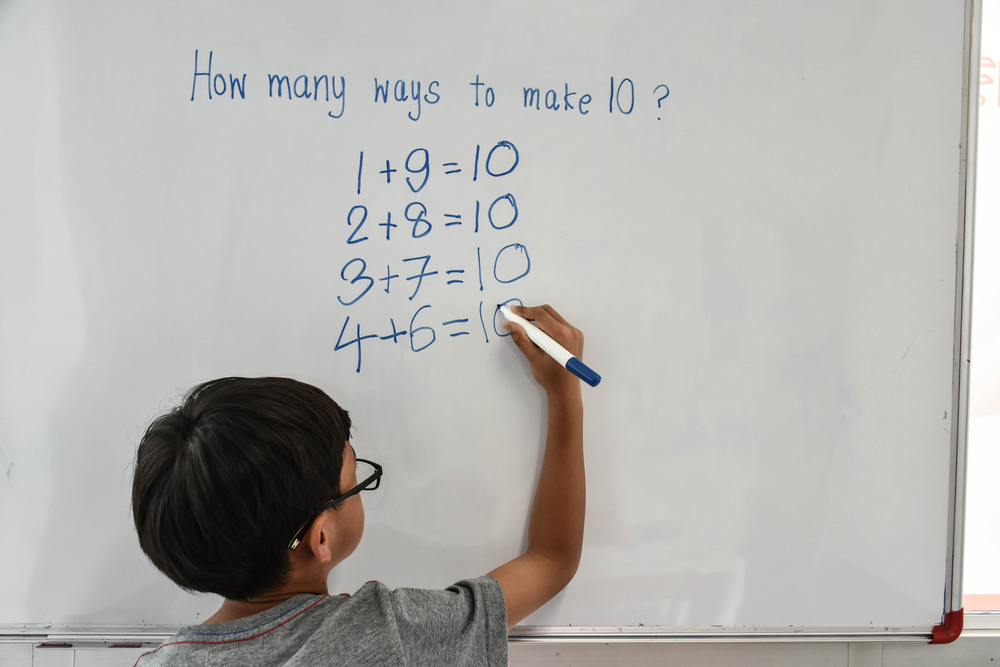Understanding number sequences Addition & Subtraction Worksheets for Ages 3-9
5 filtered results
-
From - To
Explore our "Understanding Number Sequences: Addition & Subtraction Worksheets" tailored for children aged 3-9! These engaging worksheets enhance young learners' grasp of number patterns and mathematical sequences, making foundational math fun and interactive. Through colorful illustrations and varied exercises, kids will practice addition and subtraction skills while decoding number sequences. Ideal for both classroom use and home learning, our worksheets provide a mix of challenges suitable for different learning levels. Foster your child's confidence in math and help them develop critical thinking skills with our thoughtfully designed resources today! Perfect for early grade teachers and parents alike.
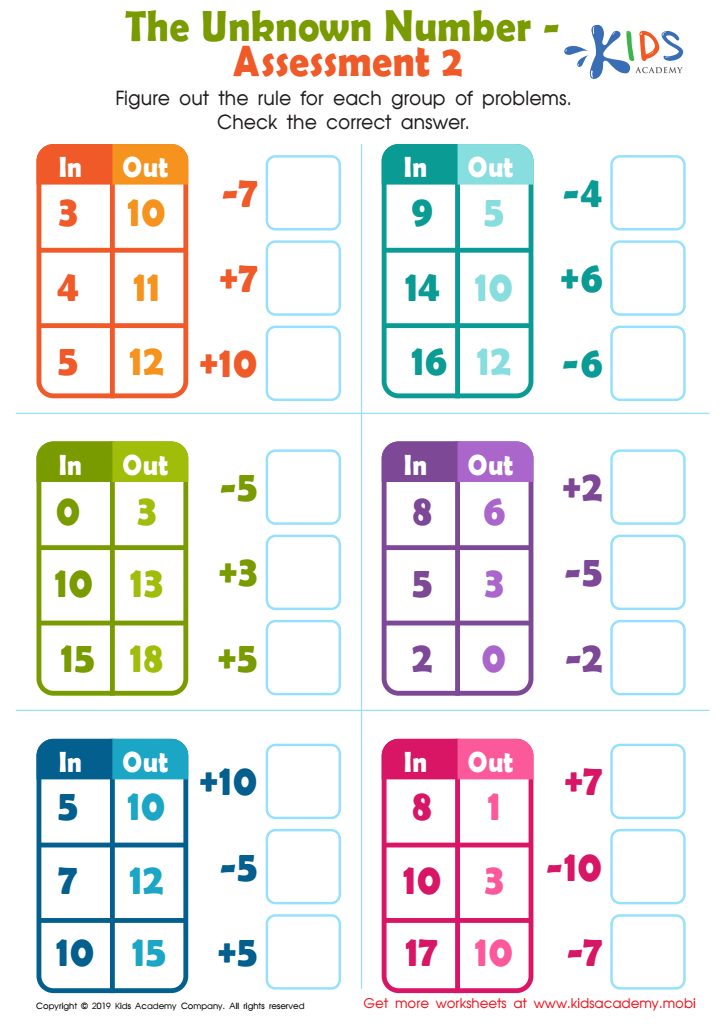

The Unknown Number - Assessment 2 Worksheet
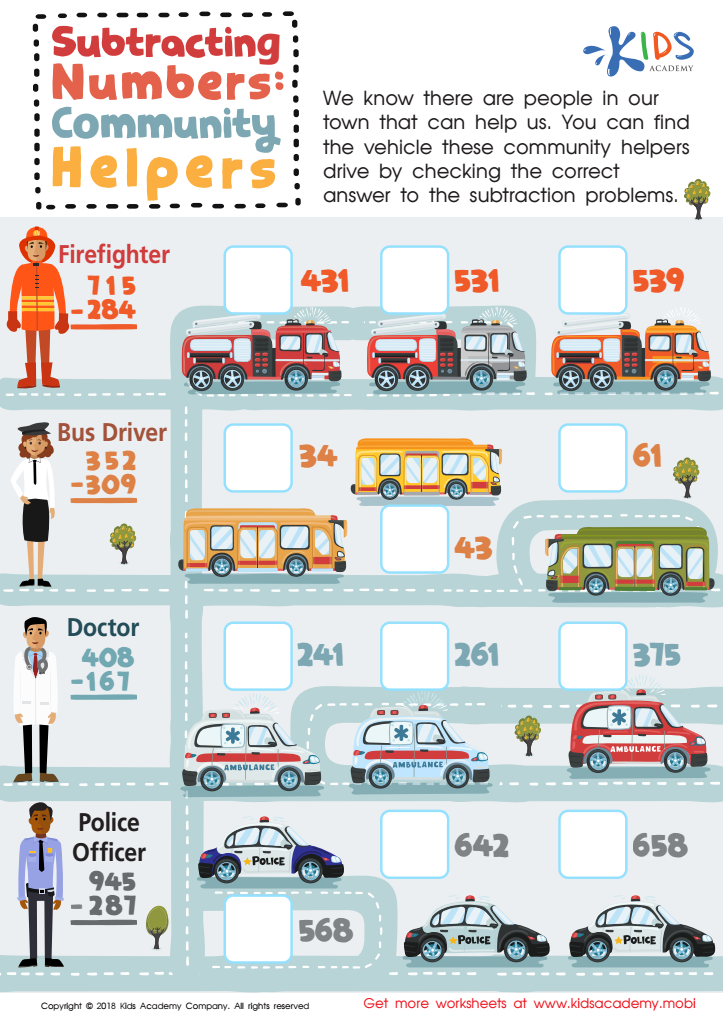

Subtracting Numbers: Community Helpers Worksheet
Understanding number sequences, addition, and subtraction is foundational for young children, making it crucial for parents and teachers to emphasize these skills between ages 3-9. This period is a critical developmental stage for mathematical understanding, where learners form essential number concepts that support later math proficiency.
Number sequences help children grasp the order and relationship between numbers, fostering strong counting skills that are integral for managing day-to-day activities, including time and money. Early exposure to addition and subtraction lays the groundwork for more complex arithmetic, enhancing cognitive abilities, such as problem-solving and logical reasoning.
Additionally, foundational math skills have a significant correlation to future academic success. Mastery of these concepts cultivates a positive attitude toward mathematics, reducing math anxiety and leading to higher achievement levels in later grades. For parents, engaging in fun, interactive number games and simple math in daily activities can reinforce skills learned at school, creating a supportive learning environment.
In summary, prioritizing number sequences, addition, and subtraction allows educators and parents to equip children with vital skills essential for academic growth, practical daily applications, and future learning experiences, ultimately setting them up for success in mathematics and beyond.
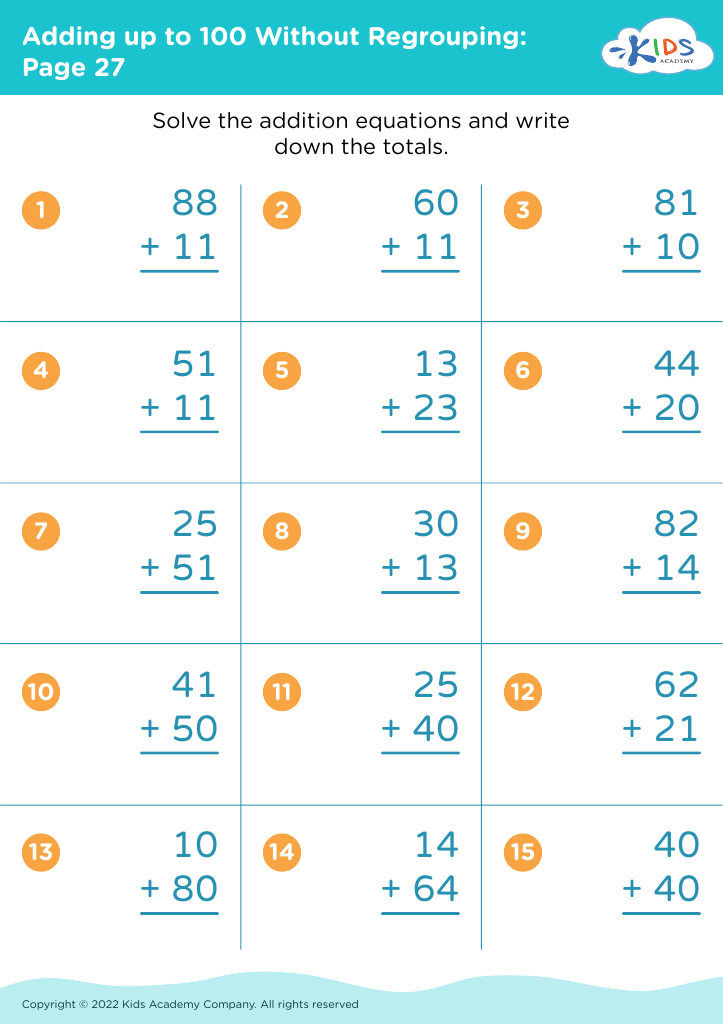

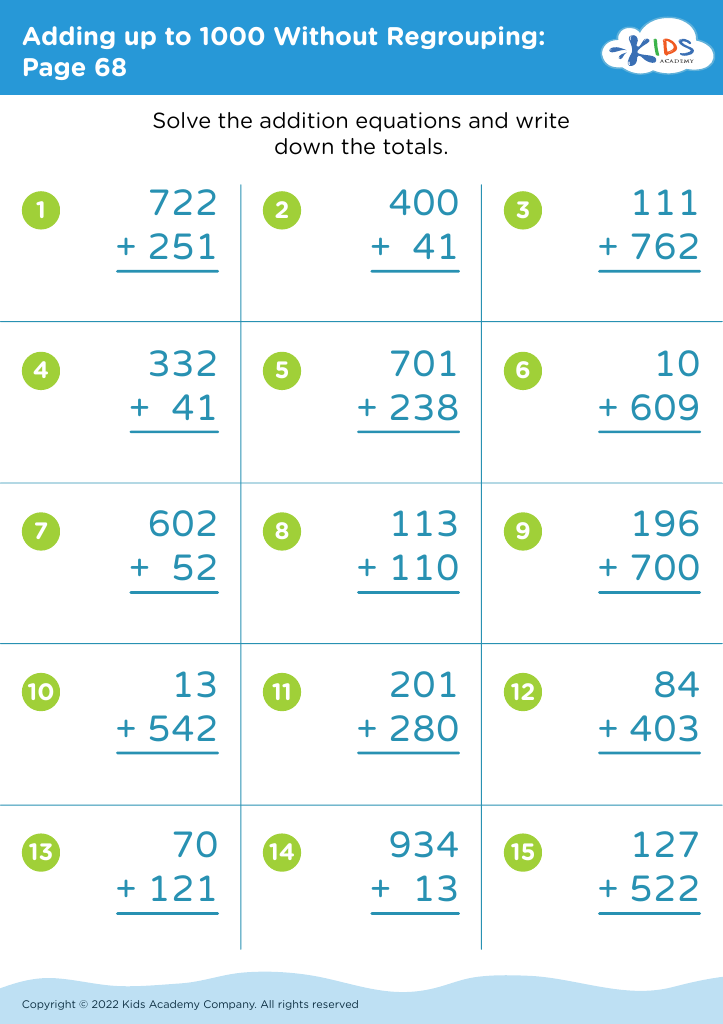
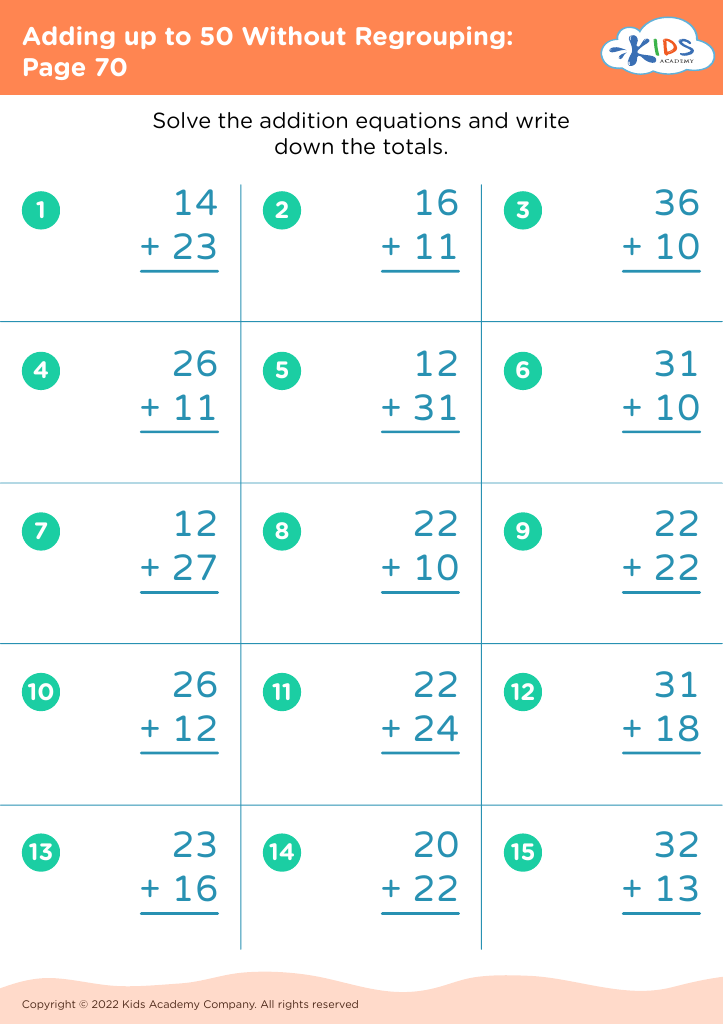
 Assign to My Students
Assign to My Students









